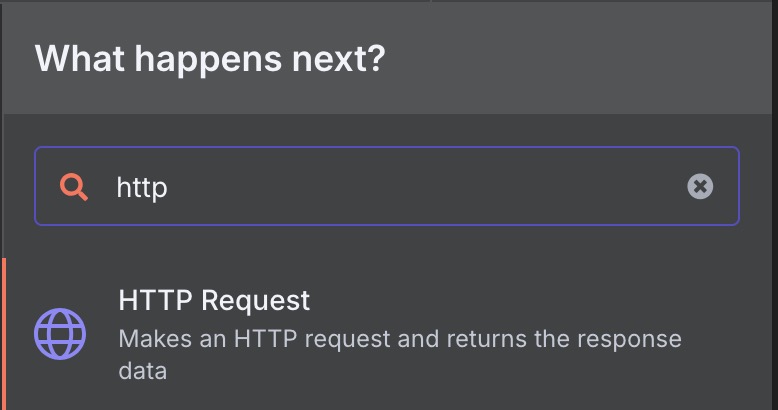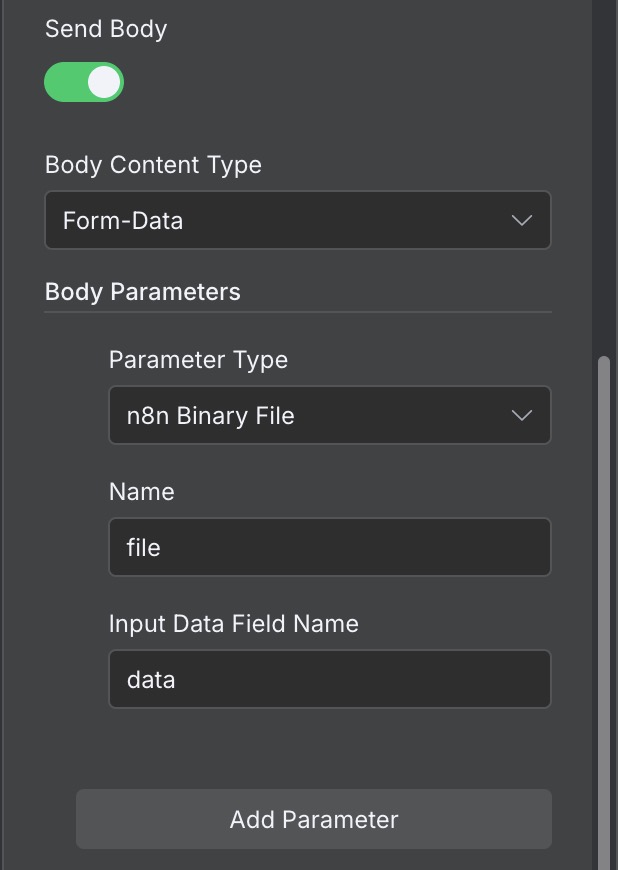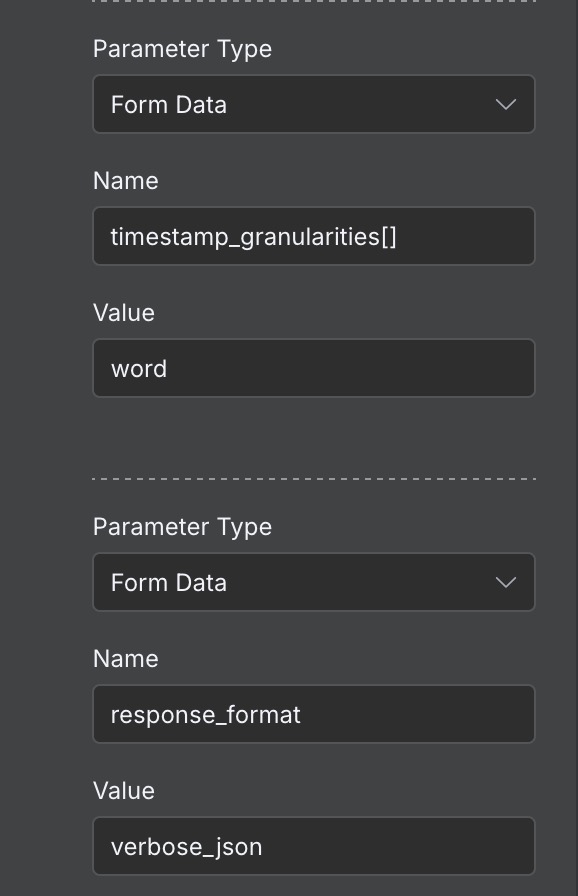-
Add HTTP Request Node:
Search for and add the HTTP Request node to your n8n workflow.

-
Import cURL Command:
Click the “Import cURL” option within the HTTP Request node. Paste the following command, making sure to replace
YOUR_NEXARA_API_KEYwith your actual Nexara API key: -
Configure Body Parameters:
- Scroll down to the Body section of the node’s parameters.
- Ensure Body Content Type is set to
Form-Data. - Under Body Parameters, click “Add Parameter”.
- Set the Parameter Type to
n8n Binary File. However, if you have the link to the file, just send the link to the file as aurlparameter to the API. - Set the Name field to
file. - Set the Input Data Field Name to
data. (This assumes the binary file data from a previous node, like “Read Binary File”, is available under thedatafield. Adjust if your field name is different.)

-
Done! (Add Optional Parameters):
Your basic setup is complete! The node will now send the file for transcription.
- To add other API parameters (like
language, orresponse_format), add more parameters under Body Parameters, typically usingStringas the Parameter Type. Like this:
- Make sure a node before this HTTP Request node reads your audio file and makes its binary data available (usually in the
datafield). Or just send the link to the audio file using theurlparameter. - If you want to perform speaker diarization, you can add the
taskparameter to the API request and set it todiarize.
- To add other API parameters (like
Guides
n8n Guide
Learn how to use the Nexara API in your n8n pipeline.
Here’s a quick guide to integrate the Nexara Transcription API with n8n:

